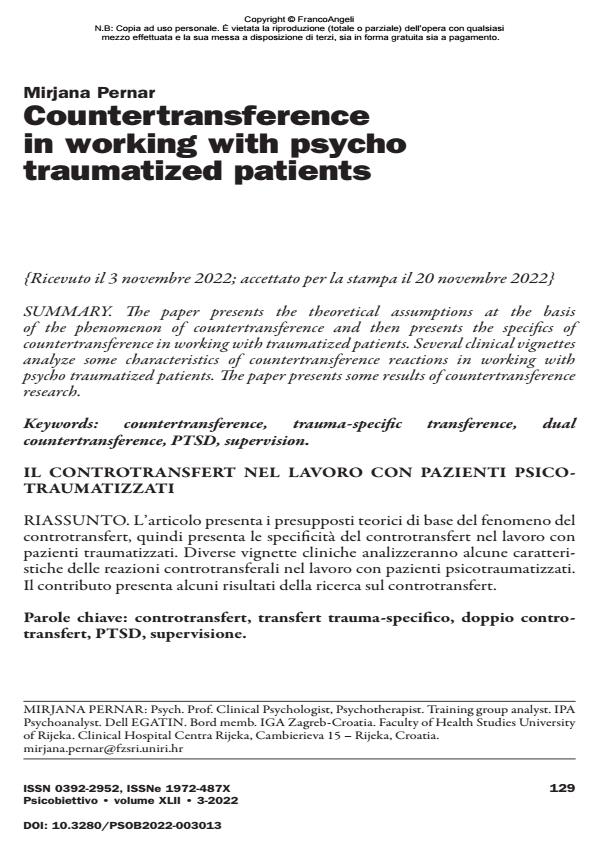Countertransference in working with psycho traumatized patients
Journal title PSICOBIETTIVO
Author/s Mirjana Pernar
Publishing Year 2022 Issue 2022/3
Language English Pages 12 P. 129-140 File size 648 KB
DOI 10.3280/PSOB2022-003013
DOI is like a bar code for intellectual property: to have more infomation
click here
Below, you can see the article first page
If you want to buy this article in PDF format, you can do it, following the instructions to buy download credits

FrancoAngeli is member of Publishers International Linking Association, Inc (PILA), a not-for-profit association which run the CrossRef service enabling links to and from online scholarly content.
The paper presents the theoretical assumptions at the basis of the phenomenon of countertransference and then presents the specifics of countertransference in working with traumatized patients. Several clinical vignettes analyze some characteristics of countertransference reactions in working with psycho traumatized patients. The paper presents some results of countertransference research.
Keywords: countertransference, trauma-specific transference, dual countertransference, PTSD, supervision.
Mirjana Pernar, Countertransference in working with psycho traumatized patients in "PSICOBIETTIVO" 3/2022, pp 129-140, DOI: 10.3280/PSOB2022-003013